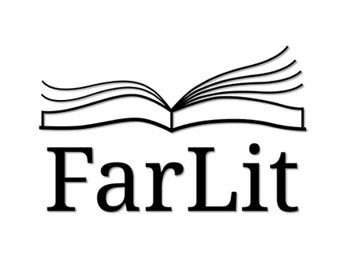For centuries Danish was the official language in the Faroe Islands and the Faroese therefore chanted and danced their literature. Secluded in the North Atlantic Ocean the people of the Faroe Islands preserved and renewed a common Germanic and Nordic literature from the Middle Ages in heroic dance ballads based upon legendary stories about Charle Magne and Sigurd the Dragon Slayer. Among international scholars these Faroese ballads are recognized as the distinct Faroese contribution to world literature and traits from the ballads are evident in contemporary literature in the Faroe Islands.
Faroese literature is a literature of contrast between the old and the new, between tradition and innovation. In Faroese poetry of today you will find many different explorative approaches to the traditional material as well as significant influence from contemporary literature of the outside world. Faroese literature is genuine Faroese and at the same time embedded in the literary history of Europe.
The world-famous Faroese writer William Heinesen (1900-1991) sets the tone in the opening of his beautifully orchestrated novel The Lost Musicians (1950): Far out in the radiant ocean glinting like quicksilver there lies a solitary little lead-coloured land. The tiny rocky shore is to the vast ocean just about the same as a grain of sand to the floor of a dance hall. But seen beneath a magnifying glass, this grain is nevertheless a whole world…
William Heinesen made modern Faroese literature known to the outside world. So did his cousin Jørgen-Frantz Jacobsen (1900-1938) with the novel Barbara (1939). Written in Danish, their novels were translated into many languages. During this same period, the first half of the 20th century, a literature written in Faroese developed. In one of the best-loved classics in Faroese literature, The Old Man and his Sons (1940), the author Heðin Brú (1901-1987) eminently depicted the struggle between the old and the new in Faroese society in the middle of the 20th century.
Many years later the author Gunnar Hoydal (b. 1941) in the novel Under Southern Stars (1992) combined the Faroe Islands and the original cultures of South America in a story of cultural discovery. The novel was by the English author Fay Weldon characterized as a major work of literature. In 2005 and 2006 the writer Carl Jóhan Jensen received much critical attention both in and outside the Faroe Islands for his ground-breaking novel Un – Tales of Devilry (2005). In recent years many Faroese poets and writers have been translated and published outside the Faroe Islands, e.g. Jóanes Nielsen, Tóroddur Poulsen, Marjun S. Kjelnæs and Hanus Kamban. Writers of children’s literature have been exceptionally successful, e.g. Bárður Oskarson with his book A Dog, a Cat and a Mouse (2004).
The poets and writers of the Faroe Islands are aware of the deep rooted traditions of Faroese poetry and story-telling and they move confidently into the realms of world literature.
Bergur Djurhuus Hansen
FarLit – an abbreviation of Faroese Literature - is a publicly funded agency for the promotion of Faroese literature on the international book market. Farit participates in bookfairs and starts initiatives to promote Faroese literature. Translators and publishers can apply for translation grants on www.farlit.fo
FarLit is funded by the Ministry of Culture.
The cross-organisational collaboration that preceded FarLit began in 2011 under the name ‘Faroese Books’ with the aim to promote Faroese books at the Frankfurt Book Fair the same year.
